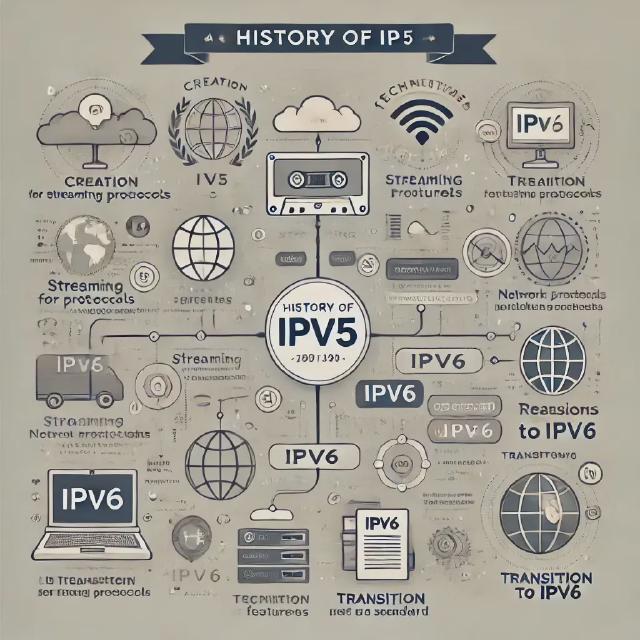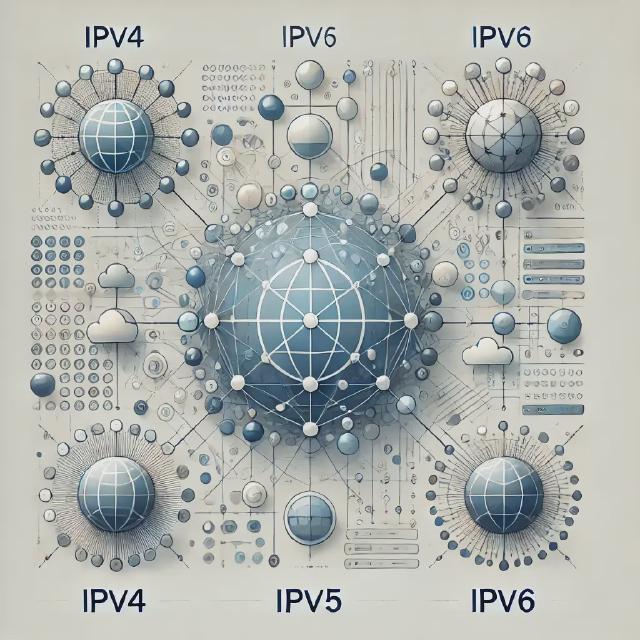
When we start talking about Internet protocols (IP), the first one that comes to mind is IPv4. It is the first widely used version of the protocol. IPv4 uses 32-bit addresses, which correspond to four bytes, and limits the number of unique addresses to 4,294,967,296 possible variations. After that, we jump straight to IPv6, which is considered the modern version of the Internet Protocol (IP), and we notice significant changes and differences compared to IPv4. For example, the length of an IPv6 address is 128 bits, while an IPv4 address is only 32 bits long. But why wasn’t there an IPv5 between IPv4 and IPv6?
In fact, there was an attempt to create a protocol between IPv4 and IPv6 — IPv5 — although few people know about it, and even fewer have heard of it. Unlike its “neighbors” in the numbering sequence, IPv5 was never meant to be a long-term solution for the expansion of the Internet. In this article, we’ll take a closer look at what IPv5 was, why it was developed, and why it never became a fully-fledged version of the IP protocol.
The Roots of IPv5: What is IPv5?
IPv5 is actually a version of the protocol that was officially called ST (Stream Protocol). It was developed in the 1980s to transmit streaming data, such as video and audio signals, in real time. The ST protocol, or IPv5, was designed to ensure high-quality and fast transmission of data streams.
Technical Features of IPv5
IPv5 wasn’t fundamentally a new version of the IP protocol, as many might assume. Instead, it was an overlay on the existing IPv4 architecture, specifically designed for streaming connections. IPv5 had several unique characteristics that were meant to facilitate the transmission of multimedia content:
- Support for Streaming Data: One of the key features of the protocol was prioritizing multimedia streams so they could receive more bandwidth compared to other types of traffic.
- Multithreaded Transmission: IPv5 supported simultaneous data transmission over multiple streams, which was critically important for high-quality video and audio streaming.
- Real-Time Operation: The protocol provided support for timestamps to track the delivery time of packets, ensuring synchronization of multimedia content and real-time transmission.
Why Didn’t IPv5 Become a Standard?
The main issue with IPv5 was that it used the same addressing system as IPv4, with the same limited number of IP addresses. Some components of its development were carried over to the following version, and that marked the end of IPv5. On the one hand, IPv5 fulfilled its purpose for streaming data transmission, but it also had significant limitations that prevented it from becoming a new Internet standard:
- Limited Address Capacity: IPv5 was based on the same 32-bit addressing system as IPv4, which meant it suffered from the same problem of a limited number of unique IP addresses. Like IPv4, it couldn’t support the growing number of connected devices.
- Lack of Flexibility for Broader Use: IPv5 was designed solely for real-time data streaming and couldn’t effectively support other types of Internet traffic, making it less versatile.
- Transition to IPv6: As it became clear that the 32-bit addressing system of IPv4 would soon be exhausted, the development of IPv6 began — the next generation of the IP protocol with 128-bit addressing. IPv6 was designed not only to solve the problem of address exhaustion but also to enhance security and improve network performance. As a result, IPv5 didn’t receive further development and was replaced by the more scalable and promising IPv6.

Conclusion
IPv5 is an example of how the evolution of the Internet was filled with numerous experiments and intermediate solutions, some of which never gained widespread use. Although this protocol didn’t become a new standard, its existence and development helped lay the foundation for future data transmission technologies. Today, the Internet continues to evolve, and perhaps one day, we will revisit the ideas embedded in IPv5 to solve new challenges.